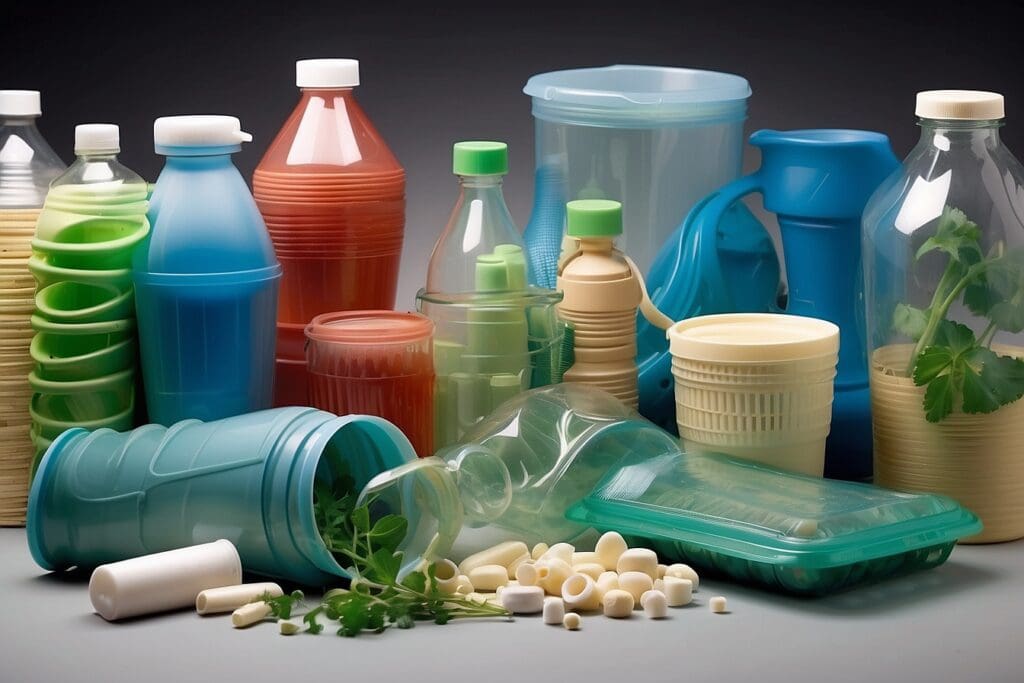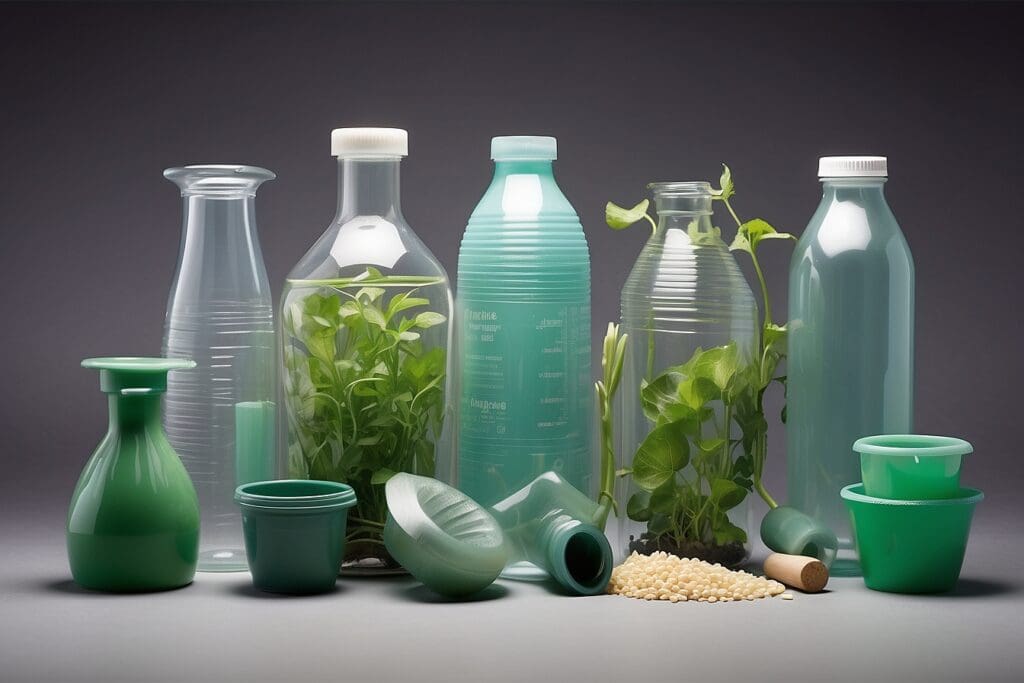It might sound strange to imagine drinking from a cup made of corn, or cutting your potatoes with a knife actually made from potatoes, but more and more people are adopting this practice—whether they know it or not. This is the new world of cups, plates and utensils made from bioplastics! Such items are composed of natural materials and therefore are biodegradable, making them (in theory) much better for the environment than the traditional throw-away plastic. The production process for these items is often similar to that of plastics, just with a substitution of plant-based material.1
Why Use Bioplastics?

Utensils and dishes made from bioplastics have a smaller environmental impact on the production side, as they come from renewable materials instead of oil. They also have an advantage over traditional plastics at the end of their life cycle because they are designed to break down more easily, and without releasing toxins into the environment like plastic products.2 Lines of bioplastic utensils, such as TaterWare™ (guess what they’re made from!), are promoted by manufacturers who boast that their products are dishwasher-safe and can be reliably used for hot food and drinks.3 When you plan on discarding your bioplastic dishes and utensils the best thing is to compost them instead of sending them to landfill,4 making them even more ecofriendly ☺
Bioplastics—A Booming Industry
These products are catching on quickly, and have already been adopted by major brands including Coca-Cola, Pepsi, and Heinz.6 This means good business for bioplastic producers such as NatureWorks, which makes bioplastic items from corn and is the world’s largest bioplastic company. Steve Bray, Director of Manufacturing at NatureWorks, described the increasing demand for these items: “in the first three years of operation we saw triple digit growth…even [during the recession] we had growth,” he said. “And now that the economy appears to be coming back we’re seeing very strong growth again.”7
The experience of NatureWorks is not unique. The bioplastics industry is undergoing huge expansion right now, driven in part by consumers who are more aware of the dangers of plastics and more willing to try alternatives. The other component is the cost for producers—as oil prices have increased over the last few years, so have manufacturing costs for traditional plastics. In other words, making bioplastic utensils is now economically feasible not because it became cheaper, but because the alternative became more expensive.8 Largely because of this trend, the bioplastics industry – which, while growing, currently makes up just a small fraction of overall plastic production – is projected to quadruple over the next two years.9 And of course, the industry is not limited to just cups, plates, and utensils; bioplastics are used in water bottles, some product packaging, and have the potential for many other applications.10
Growing pains… Bioplastics definitely sound appealing, but their quick appearance and growth in the market has resulted in a great deal of confusion for consumers, mainly how you properly dispose of bioplastic products. If someone tells you that your fork is biodegradable or compostable, what do you do with it after a meal? Throw it in your compost pile in the backyard? Does throwing it in the trash work just as well? The answers to these questions and others, unfortunately, mean that bioplastics don’t always have the minimal environmental impact for which are they designed. Let’s look at the options for disposing bioplastic…
Composting
Contrary to what you may expect, not all products labeled “compostable” are guaranteed to break down, even in commercial compost facilities. The bioplastics industry is still very new, and it takes time to develop effective standards and regulations in new sectors of the economy. A standardization effort is being undertaken by organizations such as the Biodegradable Products Institute, which “promotes the use and recycling of biodegradable plastics.”11 BPI has developed testing procedures and standardized requirements for the “compostable” label, which certifies that an item is suitable for commercial composting:12
More and more people now do their own composting right in the backyard, and these individuals naturally tend to think that products which are labeled “biodegradable” or “compostable” would make perfect additions to the compost pile. But not all compost piles are the same, as it turns out. Bioplastic items will break down at commercial composting facilities, but they often will not if they are placed in smaller, residential compost piles. The key difference is the temperature—effective composting requires a significant amount of heat to assist with the breakdown of the items, and this level of heat is only generated by commercial composting.13 As a result, consumers who put bioplastics in their backyard compost piles are likely to notice that the items will stick around for quite a long time. BPI notes on its website that “the Compostable Logo identifies products that will perform satisfactorily in well managed municipal and commercial facilities.”14 Sadly, home-composters, who should be encouraged and applauded for their efforts, cannot reach the temperatures necessary to compost bioplastics at this time.
Landfill
Let’s put aside the distinctions between residential and commercial composting for a moment. What if you don’t have access to composting at all? In these cases, bioplastics end up in the trash along with everything else, and many consumers believe that this is still better than buying plastic products. After all, these items are designed to break down, so it will happen at the landfill anyway, right? Once again, the conventional wisdom doesn’t point you in the right direction. An item may be labeled as biodegradable, but that only means that it will break down under the right conditions. And these conditions, including the presence of plentiful oxygen, are not to be found at landfills.
According to Darby Hoover of the Natural Resources Defense Council, “if the product is destined to go into the landfill, whether or not it’s biodegradable doesn’t really give it an environmental advantage…Most landfills are not designed to break things down.”15 In other words, when it comes to landfills, a compostable cup is not much different from a regular plastic one. Unfortunately, when bioplastic cannot be composted, it will end up in landfill, as it is not currently able to be recycled by our recycling plants.16
The Future of Bioplastics
With all the confusion caused by bioplastics it may seem hardly worth it to continue producing the new product. However, it is important to remember that these items are very new and adjustment is still taking place on the part of both producers and consumers, as well as composting facilities. Bioplastics have grown enormously in a very short period of time, and while this is a good sign for the environment, it has become apparent that we are not quite prepared to deal with these products in a way that produces the maximum environmental benefit. With more education and broader adoption, this process will continue. But at the end of the day, it is important to remember that bioplastics are good for the environment not just because they are biodegradable, but because they are made with natural materials. Therefore, even if they are not perfect, bioplastics are already a big improvement over petroleum-based products.




